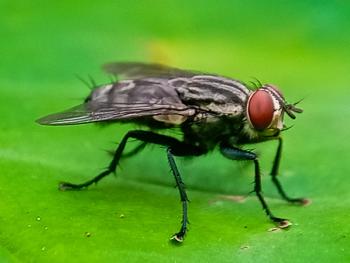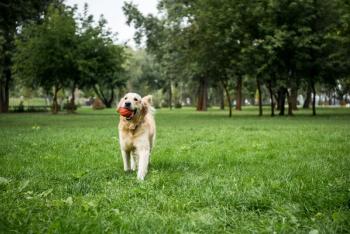
Year-round heartworm control from Maine to Cuba (Proceedings)
It is hard to comprehend why year-round heartworm control is such a difficult idea to sell to practitioners or clients.
It is hard to comprehend why year-round heartworm control is such a difficult idea to sell to practitioners or clients. Every year we seem to be treating some quarter of a million dogs for a preventable disease. Heartworm has spread throughout the United States over the last 60 years. And, we now have coyotes loaded with the parasites from California to New Jersey. Dogs and cats are at risk for a really nasty infection through most of the country, and the products used to prevent heartworm also control the majority of other infections of our canine companions, and they can get infected with many of these all year long. It just seems unconscionable that dogs are regularly getting infected with these worms when there is no good reason for it to be happening.
There is reason to believe that the majority of transmission in most of the United States does occur during seasons other than winter. Drs. Slocomb, Lok, and Knight have produced theoretical isolines suggesting when seasonal transmission will begin and end throughout the United States and Canada. These maps are based on Heartworm Development Units [HDUs]; HDUs represent Degree Days or Heat Units determined for the developing larval heartworms. For a heartworm in a mosquito to become infective, it needs 130 HDUs, i.e., the number of Degree Days (°D) that the heartworm is above the threshold temperature for development, 14°C (57°F). McTier and colleagues using sentinel dogs in Florida, Georgia, and Louisiana found that the dogs did not get infected from January to March. Watts and his colleagues showed that heartworm-bearing mosquitoes collected from Florida and Louisiana were only found infected year-round in the southern city of Bartow, FL, not in Gainesville and Baton Rouge. In California, Sacks and colleagues looking at the seasonal transmission of heartworms in coyotes found that transmission occurred in the predicted period with only rare exceptions. Thus, one can see how the arguments against year-round transmission seem fairly good.
Scenarios can arise where transmission might occur in cooler climates in the "off season." Using malaria in Europe as an example, the same isotherm lines were created and a July isotherm of +16°C was set as the temperature required for malaria to be transmitted in Europe. However, it is well documented that transmission actually occurred below this temperature in Finland. During the malaria transmission season in the Yakutia Republic of Russia, "the temperature dropped to -71.2°C in 1926, which is the cold record of the northern hemisphere. In 1933, it was -67.7°C. In these years there were 819 and 12,758 malaria cases, respectively, respectively reported from this part of Europe. Anopheles mosquitoes in Finland overwinter as adult females, and the transmission actually occurred within their domiciles. A set temperature, +16°C in the case of malaria, is required for the infective stages to develop in the mosquitoes, but this temperature does not have to be constant, the mosquitoes just need to be above this temperature for a sufficient number of days. Also, mosquitoes can live indoors long enough to become infectious. In Uzbekistan, the sporozoites of the more tropical human malaria organism, Plasmodium falciparum, can survive in overwintering Anopheles sacharovi at ambient temperatures hardly above freezing, and there is no reason to suspect that this would not also be the case for infective heartworm larvae. From northern Europe it was also shown that when temperatures were plotted against malaria cases in Finland, the most important factor was not the temperatures in the year malaria transmission occurred but the temperatures of the preceding summer that allowed mosquito larvae to develop and determine the season's number of overwintering mosquitoes. What one sees in terms of temperature this year, might be less important than what happened last year. In November of 2008, a colleague from Maine asked whether the mosquito that came out of the tool room in his basement might contain heartworms, and had he waited another month or two to go into the room, it could have been January. The mosquitoes in Finland suck blood in winter, although they wait for spring to go outside and lay their eggs. Transmission can possible occur when least expected. Yes, these are the exceptions, not the rule, but it can be stated that there are situations where heartworms can be transmitted at unusual times in unexpected climes.
Again, there is no real argument with the idea that the majority of heartworm transmission occurs during the seasons predicted by the isoline numbers; however, there are reasons to suspect that the simple relationship can be thwarted by the mosquito and parasite combining to complete transmission "off season." In 1983, Ernst and Slocombe who worked on the rationale for the HDU principle pointed out that "temperatures below 14°C and above 37°C have been reported to be detrimental to mosquito survival. However, when these extremes of temperatures occur, individual mosquitoes may rest and survive where they are protected from temperature extremes." Larvae in mosquitoes that cease development in cooled mosquitoes can resume and complete development when the mosquitoes are warmed, i.e., HDUs do not have to be consecutive. Heartworms have been recovered from overwintering mosquitoes. Also, Ernst and Slocombe demonstrated that chilling mosquitoes to 12°C did not affect the viability of third-stage larvae after they were returned to normal conditions; thus, if a mosquito with a fully-formed third-stage larva in it overwinters, the larvae can probably overwinter as well. McTier's study in GA, LA, and FL occurred from 1988 to 1991, and the paper itself points out that this was an unusual period relative to rainfall; there was a major US drought in 1988 that included the southeast. As we saw above, rainfall effects in one year can have significant effects on mosquito populations and disease transmission the next year; thus, this study might have occurred when there were naturally lower levels of mosquitoes than usual. Watts looked at nearly 110,000 mosquitoes, but to examine seasonal prevalence, not to identify potential heartworm transmission in winter months. And as the authors themselves point out in the discussion, mosquitoes are rarer in the winter even in Florida and Louisiana, and only a comparatively few mosquitoes were collected in the winter. This skews the sampling towards a reduced chance of collecting an infected mosquito in winter; thus, as the authors themselves state "winter transmission of heartworms in Gainesville and Baton Rouge cannot be ruled out with absolute certainty." Sacks and his colleagues in California found a single female transmitted into coyotes outside of season, but they had a number of male works transmitted into coyotes outside the predicted transmission period. Finally, the paper in 1995 presenting the original definition of HDU associated maps in Canada based on data collected from the previous 30 years, presciently pointed out that global warming would require that the maps be verified as to accuracy periodically, and the American Horticultural Society (2006) has since released a map for gardeners showing a marked northern movement of the various plant hardiness isolines based on newer meteorological data.
Year-round prevention also helps with internal parasite control. Parasites have evolved to with life cycles that are designed to get into carnivores. Roundworm and whipworm eggs can survive at freezing temperatures, and if ground surrounding infective eggs is thawed, and mud gets onto something ingested, the life cycle continues. Hookworm eggs and larvae are killed by freezing temperatures; but, both hookworms (Ancylostoma and Uncinaria) and roundworms (Toxocara and Toxascaris) can use paratenic hosts. The dog that catches and eats a mammal or a bird in the January is likely to get infected with these parasites. Cockroaches, can also serve as paratenic hosts of both Toxocara and Ancylostoma species. Also, Ancylostomacaninum, can mature in the intestine of the dog from larvae arrested in tissues, so a dog that was infected months before can have a patent infection develop at other times of the year. If roundworm or whipworm eggs are shed by a dog into the environment in winter, the contaminated soil will become a highly infectious bed of eggs after a couple weeks of spring temperatures. Heartworm prevention and broad-spectrum internal parasite control can prevent this scenario from developing.
There is no good reason not to prevent these infections in our pets. A quarter of a million dogs each year are treated for heartworms. A large number of dogs have patent roundworm infections. The background serologic prevalence of larval Toxocara canis in people in the United States is 13.9%, and people are not getting infected by eating eggs not from eating raw rodents or cockroaches. With the current products on the market, the love people have for their pets, and truly the minimal cost of year-round protection, it seems the logical choice over any other option.
Because parasites are really quite easy to control, veterinarians should remove parasites from the equation as completely as possible to allow the practice of medicine to be applied to those conditions and diseases requiring more problem-solving skills. In the United States the routine deworming of people was used to eradicate human hookworms from the United States. Also, we have dewormed people and increased sanitation to the point where almost no one in the United States is infected with human whipworms and roundworms. We should now provide similar protection for our canine companions.
Newsletter
From exam room tips to practice management insights, get trusted veterinary news delivered straight to your inbox—subscribe to dvm360.






